Very few people know that organisms, such as mold, yeast and blight, are fungi that constitute a hugely spread group, with numerous species that come to be the largest group of organisms after insects, there are to date more than 250,000 species of fungi mostly microscopic. All this great variety of mushrooms that exist in the world form, "The kingdom of fungi"
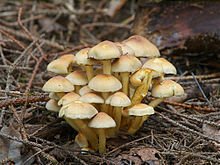
Source
For many years, fungi were considered plants, although they differ from them in certain basic characteristics, among them, it refers to the formation of cell walls, since they have a hard protective layer that surrounds them, because of a substance different from that of plants. Plants can use the energy of light to make their own food from simple substances, while fungi can not do it, as well as animals, must obtain food and energy from other sources, now we can ask the question: What are mushrooms and how are they fed?
What are mushrooms?
Fungi, unlike other plants, are heterotrophic and their cell walls are not built from cellulose, these walls are composed of a biopolymer called chitin. the fungi lack flowers and without chlorophyll, that is why, they can not form nutritious substances, but they need to live, either parasitically in animals and plants, or saprofitically on organic matter.

Source
Reproduction of mushrooms
There are two types of reproduction in fungi: Sexual and asexual

Source
The process involves the fusion of two protoplasts, which leads to the union of two compatible nuclei to meet in a single cell, which is the stage of Plasmogamy, in this process is where the arises Cariogamy , which consists of the fusion of the two nuclei; then in meiosis, the number of chromosomes will be reduced to form the haploid gametes.
On the other hand, asexual reproduction, is simpler and can be developed by a fragmentation of the mycelium, where each part gives rise to a new individual.
In this asexual form, the fungi reproduce by spores, these are formed in the sporiferous apparatus (sporocarp), which are born from the mycelium and are the visible part of the fungus. The spores of the fungi travel through the air and through the water until they settle on the surface, and upon finding the appropriate conditions it is when their reproduction begins; and it is there where the spores germinate and begin to form filaments that will later become the internal fungus, all this happens below the surface and finally when the fruit or mushroom flowers.
There are different life cycles for the mushrooms, depending on their species, but once the fruit has blossomed the life of the same will be about 7 days until their spores return to migrate.
Classification of mushrooms
The classification of the fungi depends on the characters of the mycelium (septated hyphae or siphons). These can be classified into four groups: Phycomycetes, ascomycetes, basidiomycetes and deuteromycetes. Some of them lack sporiferous devices since their spores are formed directly in the hyphae and these are called mold, that do not constitute a unitary group.
Phycomycetes fungi: These always have flagellated reproductive cells, with hyphae not septate in the form of large branched stems. They are a class of unicellular fungi whose cells carry numerous nuclei; generally the Phycomycetes live in the water. Some of this kind of fungi, are also asexual and sexual production, including in this group the fungi that vulgarly receive the name of mold.
Ascomycetes: The sporiferous apparatus of the ascomycetes usually has the shape of a capsule, blister or sphere, which constitutes the external visible part, these have bag forms that are ascas, which contain the spores that are often a number of eight, these spores of the ascas, they are called ascospores, and they are of two types of sexes. These when disseminated give rise to hyphae of two types that must merge so that a new sporiferous apparatus can be formed. Ascomycetes are considered as the most numerous group of fungi within the Fungi kingdom. They are saprophytic fungi that live and develop on many substrates, livestock manure, even underground. Among the fungi Ascomycetes, yeasts are very useful, others are the morel, the blight and the ergot; These last two are parasites of vegetables, many of them cause the rot of trees and wood.
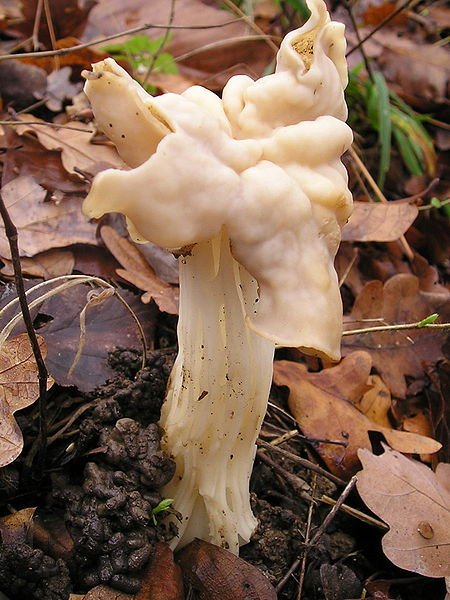
Source
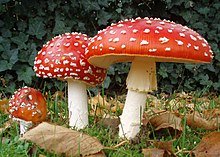
Source
So there are fungi everywhere, molds in particular have a great capacity for dispersion, some of them are used for the preparation of antibiotics and to flavor cheese, however many are dangerous parasites.
There are many fungi that live in symbiosis, which is a form of association in which it is a mutual benefit with trees and plants, where the hyphae of these fungi, cover the fine roots of the tree taking from it the nutrients and providing in compensation the nitrogenous substances that are required by the plant. An abiotic association also takes place in lichens, double organisms, composed of an algae and a fungus.
Varieties of edible and poisonous mushrooms
Already in ancient Rome, mushrooms were appreciated as a delicate delicacy. It was consumed mostly, the amanita of the Caesars, which was a red-orange mushroom, which is still one of the most popular mushrooms in southern Europe. In French cuisine, many edible mushrooms have been used since ancient times, among them mushrooms, which were cultivated since the 17th century. This crop is of great importance in French cuisine. The mushrooms with more preferences are the níscalo or rovellón, because it has characteristics that are difficult to confuse with the other poisonous species; Generally, species belonging to the genus Amanita are avoided because they are toxic, such as Amanita phalloides. Among the innumerable amounts of mushrooms, below I will mention the best known, both edible and poisonous.
Edible mushrooms:
- Colmenilla, Morchella rotunda
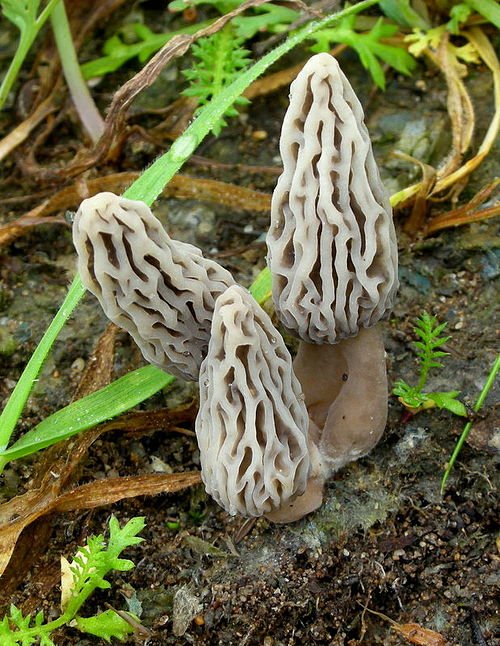
Source - Níscalo or rovellón

SourceThe Fungi in Industry and Medicine
Nowadays mushrooms are of great importance for industry and medicine. The use of fungi for human benefit is considered part of biotechnology, which has been processing these organisms for the creation of products to be used for the benefit of humanity.Certain fungi of the mold type of the genus Penicillium, generate substances that stop the activity of bacteria. One of these substances, which we call antibiotics, is penicillin, formed by a mold belonging to the genus Penicillium. These fungi became famous in 1929, when A. Fleming discovered the antibacteriological effects of penicillin.
"El descubrimiento de Alexander Fleming cambió el rumbo de la medicina moderna. Los científicos habían cultivado colonias de bacterias para estudiarlas. Fleming se dio cuenta de que un hongo había crecido accidentalmente y había matado a las bacterias que tenía a su alrededor. Este moho, la penicilina, fue el primer antibiótico que descubrimos, y su capacidad para matar bacterias salvó muchas vidas desde entonces. Hoy en día conocemos una gran cantidad de antibióticos que nos ayudan a luchar contra las enfermedades provocadas por bacterias. Source

Source
From these observations emerged penicillin, which in 1940 in Oxford continued to investigate Florey and Chain, verifying the chemo-therapeutic activity until 1943 to manufacture industrially penicillin as a medicine.
Among other fungi that give us great benefits, we have yeasts, these are unicellular fungi that are multiplied by budding, these are widely used in the beer and wine industries, in which the ferment or yeast decomposes glucose, forming alcohol and CO2 . It is also used in baking, yeast is used to give bread porosity and increase the volume; and likewise, they are used for the maturation of cheeses such as Roquefort cheese.Mushrooms in gastronomy
Mushrooms represent an important ingredient in international cuisine, especially in Europe, North America and Asia, standing out as major producers and consumers, countries such as China, USA, France, Poland and Spain.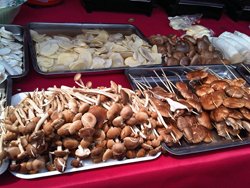
SourceAmong the most consumed mushrooms in the world we have Agaricus bisporus, which is great nutritional value, this fungus provides many vitamins including: Thiamine (B-1), Riboflavin (B-2), Niacin (B-3), Vitamin B-6
Folate (B-9), Vitamin B-12, Vitamin C, Vitamin D, Minerals, Iron, Magnesium, Phosphorus, Potassium, Sodium, Zinc.Agaricus bisporus
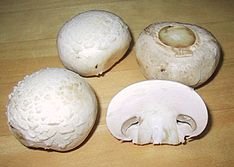
Source Scientific news about mushrooms
"They discover fungus that acts as a biofertilizer in agriculture Spain: Researchers from the University of Almería discovered a fungus that acts as a biofertilizer in agriculture. A very active strain in the control and biostimulation of plants in culture."Source
"New discovery about fungi." International scientists decipher the genetic code of a family of fungi that will help fight diseases and produce new drugs. An international consortium of researchers led by the University of Manchester has solved the genetic code of a key fungal family, including Aspergillus fumigatus, the main cause of death from infection in patients with leukemia and bone marrow transplants, as well as Aspergillus. oryzae, which is an essential component in the preparation of soy sauce."Source
References: Source Source Source Source Source Source Source
Posted from my blog with SteemPress : http://oscarcede.vornix.blog/?p=8

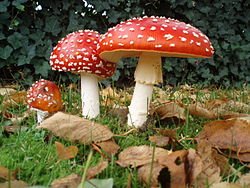
It is an interesting topic, it is important to know these tiny organisms that surround us, greetings.
Downvoting a post can decrease pending rewards and make it less visible. Common reasons:
Submit
Downvoting a post can decrease pending rewards and make it less visible. Common reasons:
Submit
Thank you very much @edu-venezuela, greetings.
Downvoting a post can decrease pending rewards and make it less visible. Common reasons:
Submit
I love mushrooms, especially morels. I try to go hunting for them every year :) @oscardede
Downvoting a post can decrease pending rewards and make it less visible. Common reasons:
Submit
I like them only on pizzas, it's a matter of customs. Regards @libertylemon.
Downvoting a post can decrease pending rewards and make it less visible. Common reasons:
Submit
Hi, it is a very informative article. Thanks for Steempressing from your blog for a greater community readabilty.
Downvoting a post can decrease pending rewards and make it less visible. Common reasons:
Submit
Thank you very much for reading the post, greetings.
Downvoting a post can decrease pending rewards and make it less visible. Common reasons:
Submit
You are so welcome.
Posted using Partiko Android
Downvoting a post can decrease pending rewards and make it less visible. Common reasons:
Submit
Your post has been selected as the @steemiteducation Post of the Day:)
Join us in our Discord channel here to drop your post in our post promotion page, and make sure to use the #steemiteducation tag in the post itself.
Downvoting a post can decrease pending rewards and make it less visible. Common reasons:
Submit
My greetings to #Steemiteducation and many thanks for the support.
Downvoting a post can decrease pending rewards and make it less visible. Common reasons:
Submit
Chinese like mushrooms for steamboat. It is a dish where we dump in raw meat and vegetables to cook them in soup as we eat them immediately!
Downvoting a post can decrease pending rewards and make it less visible. Common reasons:
Submit
What a good way to eat them, but everything is a matter of culture, I prefer them in pizza, thanks @fun2learn
Downvoting a post can decrease pending rewards and make it less visible. Common reasons:
Submit
Mushrooms are fascinating! I never thought about the fact that they aren't classified as vegetables because they don't use the sun to make food. Are you familiar with any guides to local edible mushrooms? I'd love to go hunting in my area, although the Amanita verna seem to be what I most commonly see (a shame since it's poisonous).
Downvoting a post can decrease pending rewards and make it less visible. Common reasons:
Submit
I like only those that come packaged, because it is dangerous to grab any type of mushroom. Thanks @sunravelme, for your comments.
Downvoting a post can decrease pending rewards and make it less visible. Common reasons:
Submit